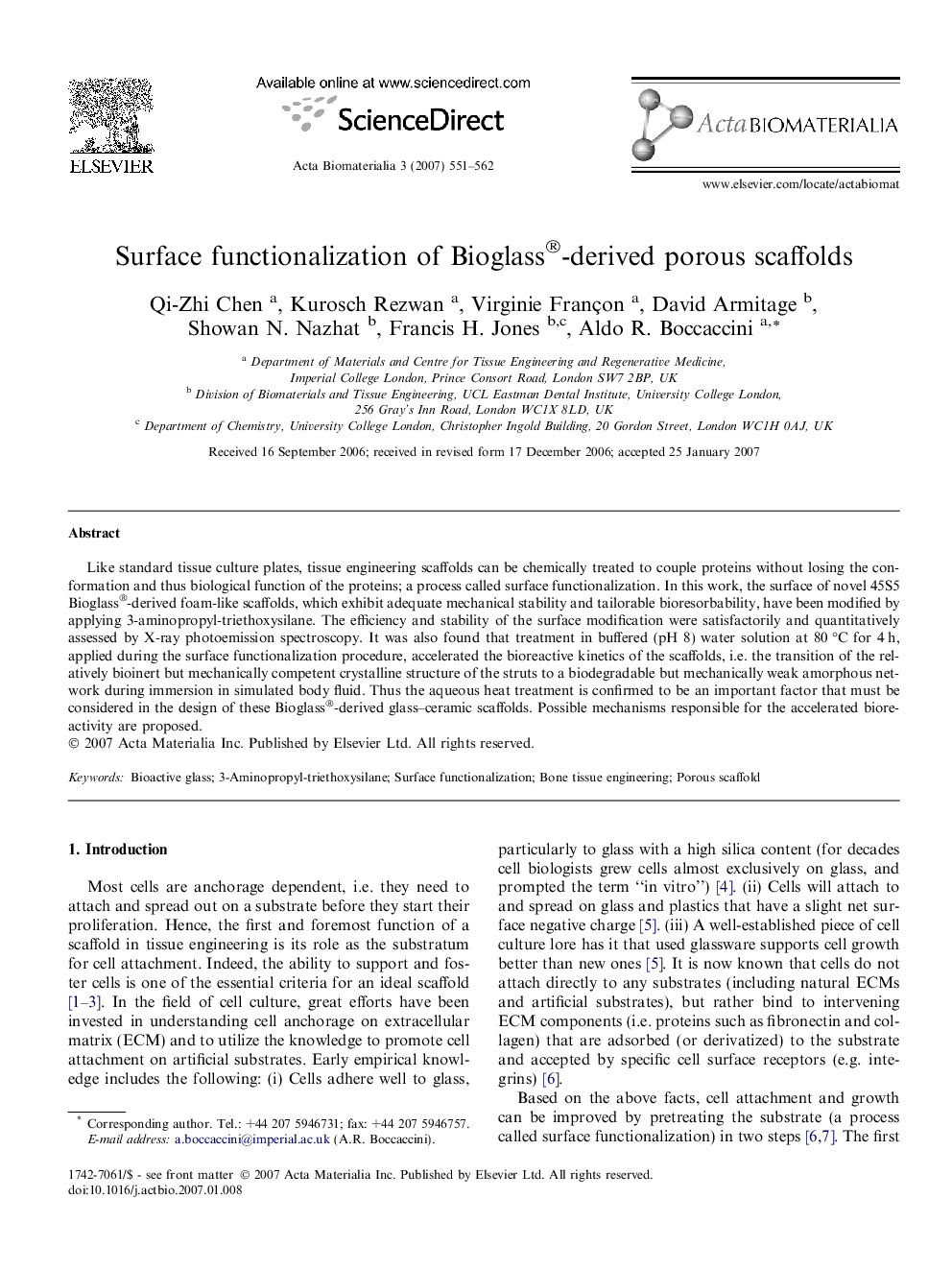| Article ID | Journal | Published Year | Pages | File Type |
|---|---|---|---|---|
| 2035 | Acta Biomaterialia | 2007 | 12 Pages |
Like standard tissue culture plates, tissue engineering scaffolds can be chemically treated to couple proteins without losing the conformation and thus biological function of the proteins; a process called surface functionalization. In this work, the surface of novel 45S5 Bioglass®-derived foam-like scaffolds, which exhibit adequate mechanical stability and tailorable bioresorbability, have been modified by applying 3-aminopropyl-triethoxysilane. The efficiency and stability of the surface modification were satisfactorily and quantitatively assessed by X-ray photoemission spectroscopy. It was also found that treatment in buffered (pH 8) water solution at 80 °C for 4 h, applied during the surface functionalization procedure, accelerated the bioreactive kinetics of the scaffolds, i.e. the transition of the relatively bioinert but mechanically competent crystalline structure of the struts to a biodegradable but mechanically weak amorphous network during immersion in simulated body fluid. Thus the aqueous heat treatment is confirmed to be an important factor that must be considered in the design of these Bioglass®-derived glass–ceramic scaffolds. Possible mechanisms responsible for the accelerated bioreactivity are proposed.
